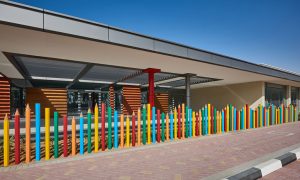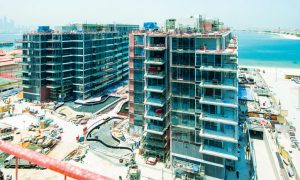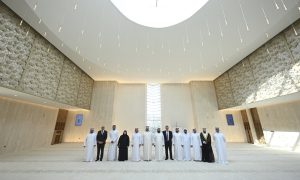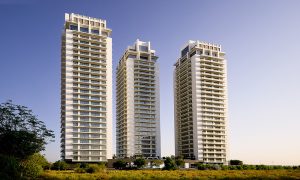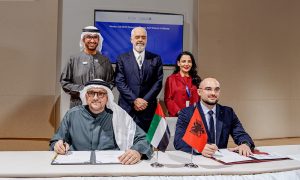Road to Libya
With year-on-year growth in Libya’s construction sector and large investments in tourism projects; opportunities are rife, but the unique business environment demands time and patience.

Multi-million dollar investments in hotel construction, infrastructure developments and revised entry requirements for foreign travellers to Libya reflect the country’s dynamic and growing travel and tourism sector. In 2008, the Libya Investment Board (LIB) indicated that the number of ongoing tourism projects was 37, at a combined value of LYD242 billion (US $190 billion).
Various hotels have been renovated and LIB estimated seven upcoming hotel developments in the country, with a combined capacity of as many as 2500 rooms, due to be completed by 2011, according to research company Euromonitor International.
Last year, construction started on a modern mixed-use development for client Libya African Investment Portfolio (LAP), situated in the centre of the Libyan capital, Tripoli. Tower 69 is expected to be completed in 2012 and includes offices, a commercial complex and a seven-star hotel.
Godwin Austen Johnson (GAJ), one of the largest UK architectural and design practices in the UAE recently expanded into Libya having been contracted to provide full interior-design services for the Tower 69-based hotel: “Winning the contract for the seven-star hotel has proved to be a catalyst for us and enabled us to pick up other projects. We continue to look at opportunities.
We also have a small project office for the site-based staff on the hotel project and expect that we will have a more permanent base in the country by the end of the year,” GAJ partner Graeme Fisher tells The Big Project.
Diverse Project Range
Fisher says that the group is undertaking numerous projects still at concept stage in- and around Tripoli. These include a vast mixed use master plan, which will provide commercial, retail, hotel and residential accommodation, and a master-plan project providing a retail street and boutique hotel accommodation. GAJ is also working on feasibility studies for potential new-builds and historic refurbishment projects. “While we are largely working on new-build projects, we have been asked to look at some potential historic restoration work within the Medina.
This is really exciting because there is so much history and context to draw from. We expect to see a whole mix of new projects over the next few years; ranging from large new builds catering to the expected influx of companies, workers and tourists, to one-off boutique scale interventions into the city’s existing fabric,” adds Fisher.
Increasing numbers of visitors and expats also call for infrastructure investments. Euromonitor reports that infrastructure has been at the heart of governmental investment policy in Libya since 2004, with particular regard to the transport sector. It states that air travel has benefited the most with investments of $5 billion.
Market Rollercoaster
But while travel and tourism in Libya is expected to flourish over the next few years due to the country’s niche tourism products, Libya will remain an oil-dependent country and the contribution of services and travel and tourism to GDP is expected to remain quite low. Furthermore, in its Libya Infrastructure Report 2010, Business Monitor International acknowledges that the tremendous growth in Libya’s construction sector since 2003, when UN sanctions were lifted, was “blunted” in 2009 by the global recession. After witnessing year-on-year growth as high as 27% in 2007, industry value real growth fell into negative territory at -1.18% last year.
On the upside, Business Monitor International states that growth is expected to return this year, with sector value rising from currently $3.84 billion to $6.12 billion in 2014. Major infrastructure projects have continued to focus on Libya’s utilities sector. A joint venture between Russias Technoprom export and LAP announced a fund of $6.73 billion for power projects in Africa, including a 1250km, 400kV transmission line in Libya.
Water sanitation was also a key priority last year, with Daewoo Motor Sales of South Korea, Impregilo Lidco of Italy, Singapore’s Hyflux and Punj Lloyd of India all signing multi-million dollar contracts to build networks for drinking water, sewage water and storm water. A water-purification and fluid treatment company has won a contract to build two desalination plants, the company reports.
Hyflux has signed a memorandum of agreement with the commercial arm of the Libyan Ministry of Utilities’ General Desalination Company (GDC), which allows Hyflux to jointly invest in- and develop two reverse-osmosis desalination plants in Libya.
Perseverance Pays
Project financing can be an issue due to weak contract enforceability and unpredictable government intervention in Libya, which has in turn raised price risks for energy and transport assets.
Having experienced Libya’s unique and challenging construction environment firsthand, GAJ’s Fisher says: “Libya has simply incredible potential. It has rich natural resources, an enviable geographical location, a beautiful climate and a rich historical legacy. We are excited to be involved in various projects in the country, but we understand that our commitment to Libya needs to be a long-term one. "Godwin Austen Johnson wants to be involved with helping the country develop in a very considered and a sustainable way,” he asserts.
Business Monitor International reports that the outlook for Libya remains positive despite the tightening of infrastructure budgets as a result of the global recession. It says Libya’s position as an energy exporter guarantees foreign interest in development projects particularly given its proximity to Europe and the recent defrosting of political relations. There is not expected to be a boom in travel and tourism in Libya for several years as most of the projects that started after 2005 have an average completion period of five to 10 years.
But, Euromonitor International reports that the governments focus on promoting travel and tourism through developing and upgrading Libyan infrastructure, for example airports and ports such as Sirte and Tripoli, remains. The government aims to use travel and tourism as a way of promoting Libya as a country that is open to political and economic changes and is close to western culture. In the meantime, opportunity seekers that are heading to Libya should certainly not “expect that things will run as smoothly or as efficiently as they might in the West, or in more established Middle Eastern environments,” says Fisher.
“The country is only just starting to develop and certain planning and construction-related procedures are only now starting to be defined.” The key to being successful in Libya is to be in Libya, which involves investing time and energy, and having a fair degree of patience,” he concludes.



